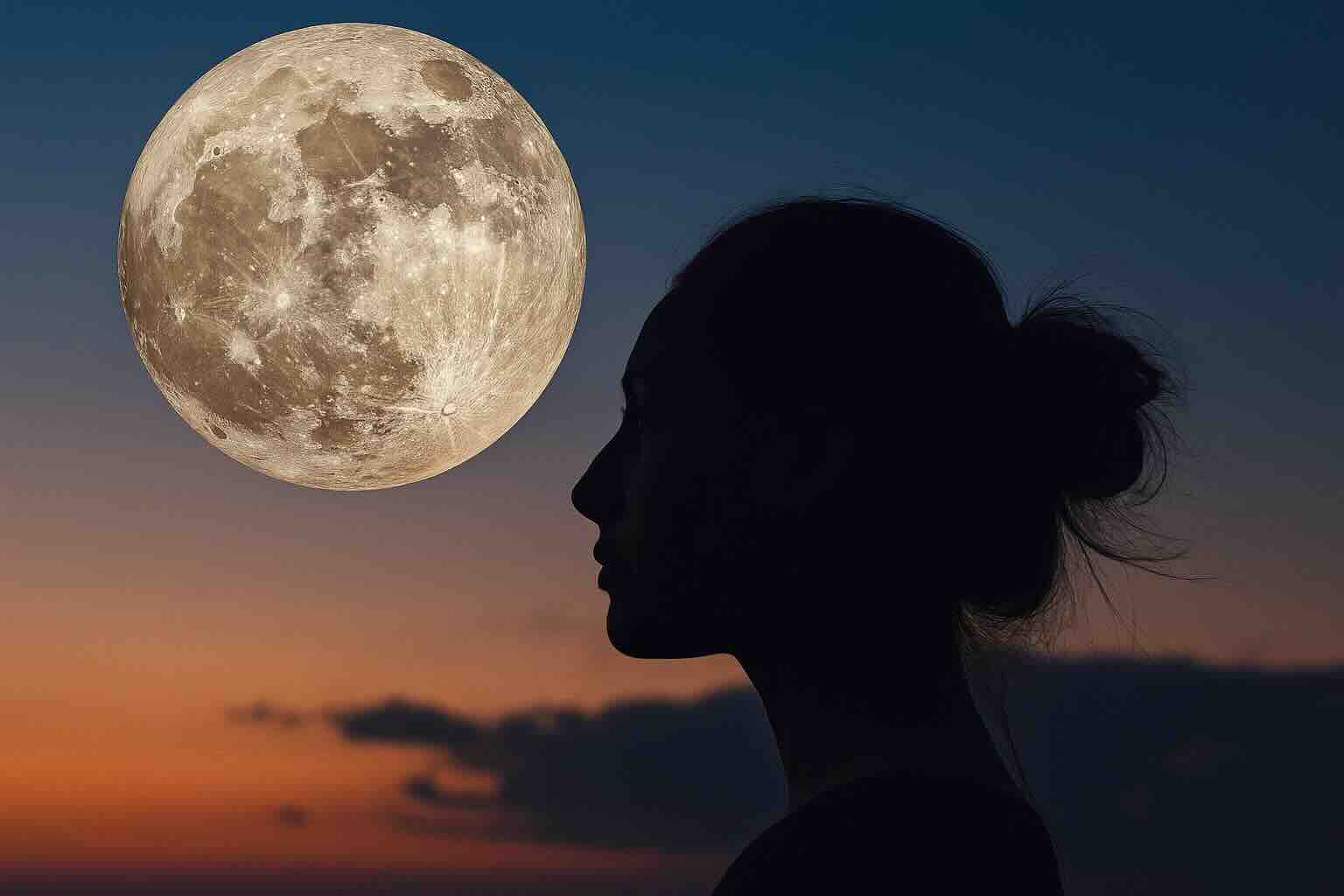The moon has long fascinated humanity. It guides tides, lights the night sky, and inspires myths across cultures. But does it also touch our minds? For centuries, people have believed that the moon’s cycles affect human psychology, emotions, and even behavior. Science has explored these claims with curiosity, finding patterns that are both subtle and surprising.
The Power of Lunar Cycles
From full moons glowing overhead to dark new moons, the lunar cycle repeats every 29.5 days. Ancient civilizations used these cycles to measure time, plant crops, and schedule rituals. Over time, the moon became linked with fertility, mood swings, and sleep patterns. Even today, phrases like “lunacy” and “moonstruck” show how deeply the moon is tied to ideas of altered states of mind.
Sleep and the Full Moon
One of the most studied areas of lunar psychology is its effect on sleep. Several scientific studies suggest that people may sleep less and experience lighter rest during the full moon. Researchers at the University of Basel in Switzerland found that participants took longer to fall asleep and had reduced deep sleep when the moon was full—even when they could not see it.
Why does this happen? Some scientists believe it could be due to the extra light, while others suggest humans may have evolved to be more alert under bright night skies for survival. While the exact mechanism remains debated, many people still report restless nights around the full moon.
Emotions and Mood Shifts
Beyond sleep, the moon has been associated with emotional changes. Anecdotal evidence and folklore often link the full moon with heightened emotions, from excitement and creativity to irritability or anxiety. Hospital workers and emergency responders sometimes report busier nights during full moons, although studies show mixed results.
Some psychologists suggest that the moon may serve as a “cosmic mirror,” amplifying feelings people already carry. The glow of a full moon can trigger reflection, stirring emotions that are normally hidden. While not scientifically proven as a direct cause, the symbolism of the moon influences how people interpret their emotional states.
The Moon and Mental Health Myths
Throughout history, the moon has been blamed for madness, strange behavior, and even crime. The term “lunatic” comes from the Latin word for moon, luna. Medieval doctors believed phases of the moon affected mental illness, and folklore often claimed that wolves, witches, or spirits gained power under full moons.
Modern science has tested these beliefs. While studies generally find no direct connection between lunar phases and crime rates or psychiatric admissions, the persistence of these myths reveals something deeper: humans are storytellers. We seek meaning in natural cycles, and the moon provides a powerful canvas for our fears and hopes.
The Moon’s Role in Biological Rhythms
Even if the moon does not directly control emotions, it may play a role in regulating biological rhythms. Some research suggests that women’s menstrual cycles, averaging 28–29 days, align closely with the lunar month. In traditional societies without artificial lighting, menstrual cycles were often synchronized with moonlight, peaking during full moons or new moons.
This connection highlights the moon’s influence not just as a cultural symbol but as a natural timekeeper. Our bodies, like the oceans, may still carry subtle echoes of lunar rhythms.
Lunar Symbolism in Psychology
The moon’s psychological impact also appears in art, dreams, and symbolism. In Jungian psychology, the moon often represents the unconscious mind, emotions, and intuition. Its changing phases reflect cycles of renewal, shadow, and growth. Many people report feeling more reflective or creative under certain moon phases, using the symbolism as a tool for self-awareness.
For example, the new moon is often seen as a time to set intentions, while the full moon is considered a period of release or celebration. These rituals may not alter brain chemistry, but they provide structure and meaning, helping people navigate emotional landscapes.
Culture, Belief, and Reality
Across the world, cultures continue to celebrate the moon’s psychological influence. In Asia, festivals like the Mid-Autumn Moon Festival honor its beauty and symbolism. In Western traditions, astrology links moon signs to inner emotional life, suggesting that the moon’s position at birth shapes personality.
Even if modern science questions these claims, they remain powerful because they give people a way to connect with nature and themselves. Belief in lunar influence can shape behavior, creating real effects through the power of expectation.
Conclusion: A Subtle but Enduring Influence
The moon may not control our minds, but it continues to influence human psychology in profound ways. Its cycles affect sleep, inspire emotion, and provide symbols that guide culture and self-reflection. Whether through science or myth, the moon reminds us that we are part of a larger rhythm—one that connects body, mind, and the cosmos.
As we look up at the next full moon, we can appreciate not just its beauty, but its quiet role in shaping the stories we tell about ourselves. In the end, the moon is not just a rock in space. It is a mirror of the human mind, reflecting both science and imagination.
